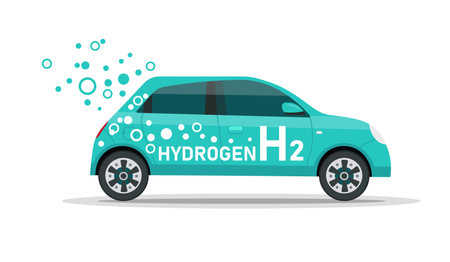Understanding EV Battery Lifespan and Degradation
When considering the economics of electric vehicle (EV) battery replacement in the UK, it’s essential to first understand how long these batteries typically last and what factors influence their longevity. Under typical British driving conditions—characterised by variable weather, frequent short journeys, and a mix of urban and rural roads—most modern EV batteries are designed to last between 8 to 10 years or around 100,000 to 150,000 miles before significant degradation occurs. However, actual lifespan can vary depending on several key factors.
Main Causes of Battery Degradation
Battery degradation in EVs is primarily caused by the natural chemical wear that happens during charge and discharge cycles. In the UK, rapid charging at public stations—often used for convenience—can accelerate this process due to increased heat generation. Additionally, exposure to extreme temperatures (both hot and cold) can impact battery health; while the British climate is generally moderate, occasional heatwaves or frosty winters do present challenges. Driving habits also play a role: regular deep discharging and high-speed motorway driving may increase the rate of degradation compared to gentle city commuting.
Signs Your EV Battery May Need Replacement
For most UK drivers, a gradual reduction in driving range is the first noticeable sign of battery ageing. You might find you’re not getting as many miles per charge as you once did. Other indicators include longer charging times, unexpected drops in state-of-charge readings, or even dashboard warnings related to battery health. Manufacturers often provide warranties covering battery performance for a set period or mileage—typically around 8 years or 100,000 miles—but it’s wise to monitor your own usage patterns and look out for these early warning signs.
The Bottom Line for UK Owners
Understanding how batteries degrade under UK conditions helps owners make informed decisions about maintenance, when to seek professional diagnostics, and ultimately how to plan financially for potential replacement costs further down the line. This foundational knowledge sets the stage for evaluating the real economic impact of EV ownership and battery replacement in Britain.
2. The True Cost of EV Battery Replacement in the UK
When considering the economics of electric vehicle (EV) ownership, battery replacement remains one of the most significant long-term expenses. In the UK, the cost of replacing an EV battery is influenced by several key factors: the make and model of the car, whether you opt for a main dealership or an independent specialist, and additional charges such as labour and VAT.
Current Replacement Prices for Popular EV Models
| Model | Main Dealership Cost (£, inc. VAT & Labour) | Independent Specialist Cost (£, inc. VAT & Labour) |
|---|---|---|
| Nissan Leaf (40kWh) | £5,000 – £6,500 | £4,200 – £5,000 |
| Tesla Model 3 (Standard Range Plus) | £9,000 – £12,000 | £7,000 – £9,500 |
| Renault Zoe (ZE50) | £6,000 – £7,500 | £5,000 – £6,200 |
| BMW i3 (33kWh) | £6,500 – £8,000 | £5,300 – £7,000 |
| Kia e-Niro (64kWh) | £7,500 – £9,000 | £6,000 – £7,800 |
The Breakdown: What’s Included?
Main dealerships typically offer a full-service package that incorporates genuine manufacturer batteries, certified installation by trained technicians, and a new warranty period for the replacement battery. These benefits come at a premium price due to higher overheads and branding. Conversely, independent EV specialists often source high-quality compatible batteries—sometimes reconditioned or refurbished—which can result in substantial savings without necessarily compromising reliability. Labour rates are also generally lower outside of official dealer networks.
VAT and Labour: The Hidden Influencers on Cost
The UK’s standard VAT rate of 20% is applied to both parts and labour on battery replacements. Labour costs can range from £60 to over £120 per hour depending on location and provider. For example, London-based dealerships may charge more than rural independents. It’s wise to request a detailed quote up front to avoid unexpected add-ons.
Main Dealership vs Independent: Which Offers More Value?
If you’re planning to keep your EV for many more years or hope to maximise resale value with a full service history and genuine parts, main dealers might offer peace of mind despite the extra outlay. However, if you’re looking to minimise costs—especially for older models where residual value is already depreciated—an independent specialist could be your best option. Always ensure that any third-party work comes with an adequate warranty and uses reputable components.

3. Funding Options and Manufacturer Warranties
When facing the significant cost of EV battery replacement in the UK, understanding your funding options is crucial. The landscape is evolving rapidly, with a range of schemes and protections designed to soften the financial blow for drivers.
Manufacturer Warranties: Your First Line of Defence
Most EV manufacturers offer robust battery warranties as standard, typically covering eight years or up to 100,000 miles, whichever comes first. These warranties usually promise a minimum state of health—often around 70% capacity—and include full replacement or refurbishment if your battery falls below this threshold. Major brands like Nissan, Tesla, and Hyundai are known for strong aftercare support, but always check the fine print; exclusions can apply for degradation due to extreme use or improper maintenance.
Leasing Schemes: Spreading the Cost
For those concerned about long-term battery health, several UK providers now offer battery leasing schemes. Renault pioneered this approach with their Zoe, allowing drivers to lease the battery separately from the vehicle. This model reduces upfront costs and shifts responsibility for battery failure back to the provider. Monthly payments may not appeal to everyone, but leasing can provide peace of mind and predictable budgeting.
Insurance Cover: Mind the Gaps
While some comprehensive car insurance policies in the UK cover accidental battery damage (such as collision or fire), very few will protect against natural degradation or age-related loss of capacity. Specialist EV insurance products are emerging but read policies carefully—replacement due to normal wear and tear is almost never included.
Potential Government Support: Watch This Space
At present, direct government grants for EV battery replacement are limited in the UK, though broader incentives exist for new EV buyers and charging infrastructure. However, with increased focus on sustainability and second-life battery recycling, policy changes could soon offer more targeted support for drivers needing replacement batteries.
Navigating Your Choices
Ultimately, understanding your coverage—whether through warranty, leasing, or insurance—is vital before you’re faced with a costly decision. As the EV market matures and more batteries reach end-of-life, expect further innovations in funding and support mechanisms tailored to British motorists.
4. Impact on Resale Value and Total Cost of Ownership
The battery pack is the heart of any electric vehicle (EV), and its health plays a pivotal role in determining both the resale value and the overall cost-effectiveness of owning an EV in the UK. Unlike traditional petrol or diesel cars, where engine wear and tear are well-understood factors, the condition of an EV’s battery introduces a new layer of complexity for buyers and sellers alike.
Battery Condition: The Key to Residual Value
For prospective second-hand buyers, battery degradation is often the top concern. Modern lithium-ion batteries typically retain 70-80% of their original capacity after 8-10 years, but this varies by make, model, and usage patterns. A healthy battery ensures desirable range and performance, directly influencing how much value an EV holds on the used market. Conversely, vehicles nearing the end of their battery warranty or showing significant capacity loss see steeper depreciation compared to their petrol or diesel counterparts.
Resale Value Comparison Table
| Vehicle Type | Average 5-Year Depreciation (%) | Key Depreciation Factors |
|---|---|---|
| Petrol/Diesel Car | 50-60% | Mileage, service history, emissions regulations |
| Electric Vehicle (Good Battery) | 45-55% | Battery health, warranty remaining, charging network |
| Electric Vehicle (Worn Battery) | 60-70% | Battery replacement costs looming, reduced range |
Total Cost of Ownership: Looking Beyond Upfront Price
While EVs often have higher purchase prices than equivalent ICE vehicles, the long-term economics can be favourable—if battery longevity is maintained. In addition to fuel savings and lower maintenance costs (no oil changes or exhaust issues), government incentives like reduced road tax and congestion charge exemptions further tip the balance for many UK motorists.
Total Cost of Ownership Breakdown (Example: Mid-size Hatchback)
| Cost Category (5 Years/60k miles) | EV | Petrol Car |
|---|---|---|
| Purchase Price (after grants) | £28,000 | £22,000 |
| Fuel/Electricity Costs | £2,400 | £6,000 |
| Servicing/Maintenance | £1,200 | £2,500 |
| Road Tax/ULEZ Charges | £0-200 | £800+ |
| POTENTIAL Battery Replacement* | £0-£6,000* | N/A |
| Total Estimated Cost (excluding battery replacement) | £31,600 – £37,600* | £31,300+ |
*Most EVs will not require a battery replacement within five years; this cost applies mainly to older models or high-mileage vehicles.
The Bottom Line for UK Buyers and Sellers
A well-maintained battery is essential for maximising both the financial return at resale and the overall savings from driving electric. While uncertainty around future battery replacement costs can influence second-hand values today, advances in technology and growing aftermarket support are likely to reduce these concerns over time. For UK drivers weighing up petrol versus electric options, understanding how battery condition shapes long-term ownership costs is now just as important as comparing MPG figures once was.
5. Second Life and Recycling: What Happens to Old EV Batteries?
The journey of an electric vehicle battery does not end when it can no longer power a car efficiently. In the UK, the conversation around battery replacement is increasingly tied to what happens next—an area gaining both environmental and economic significance. As EV adoption rises, so too does the need for robust second-life and recycling solutions, making this a key part of the total cost and value equation for motorists.
Repurposing: Giving Batteries a Second Life
Emerging trends in the UK see used EV batteries being repurposed for less demanding applications once their automotive performance wanes. Many batteries retain 70-80% of their original capacity after their first life, making them ideal for stationary energy storage—think home battery systems or commercial backup power. Several British firms and research institutions are developing frameworks to streamline this transition, reducing waste while extracting additional value from each battery unit.
Recycling Infrastructure: Closing the Loop
The UK’s recycling infrastructure for lithium-ion batteries is rapidly evolving. While previously many end-of-life batteries were exported for processing, new domestic facilities are emerging, such as those supported by the Faraday Institution and major car manufacturers. These plants recover valuable materials like lithium, cobalt, and nickel, which can then re-enter the supply chain—helping to lower costs and reduce reliance on imported raw materials.
What Should Drivers Expect When Returning Used Batteries?
If you’re considering replacing your EV’s battery in the UK, it’s worth knowing that most major manufacturers and dealerships operate take-back schemes compliant with environmental regulations. When handing back your old battery, you can expect it to be assessed for potential second-life use before being sent for recycling if unsuitable. Some schemes even offer financial incentives or discounts on new batteries based on residual material value, which can help offset overall replacement costs. This closed-loop system not only supports sustainability but also influences the long-term economics of owning an EV in Britain.
6. Maximising Battery Value: Prolonging Life and Reducing Replacement Risk
When considering the economics of EV battery replacement in the UK, proactive care can make a marked difference to both running costs and long-term value retention. Here are some practical, UK-specific strategies for stretching your EV’s battery life and minimising the risk of an expensive replacement.
Smart Charging Habits: At Home and on the Road
The UK’s variable climate means temperature extremes are less common, but consistent charging habits remain key. Avoid fully charging your battery to 100% unless you need maximum range for longer journeys. Most manufacturers recommend keeping daily charges between 20% and 80%. If you’re using a home charger, consider using a timer or smart charging app to schedule charges during off-peak hours—this not only saves money with lower tariffs, especially if you’re on an Economy 7 or Octopus Go tariff, but also reduces grid strain.
Public Charging Etiquette and Best Practice
With public chargepoints increasingly commonplace across Britain’s towns and motorways, it’s tempting to top up frequently. However, repeated use of rapid DC chargers can accelerate battery wear over time. Where possible, opt for slower AC charging stations when you don’t need a quick turnaround—ideal for shopping trips or overnight hotel stays. And remember the unwritten rule: move your car once charging is complete to keep things civil for fellow drivers.
Mind the Weather
While British weather is relatively mild, prolonged exposure to extreme cold or heat can still affect battery health. If possible, park in a garage during winter months to reduce cold-related range loss. In summer, shaded parking helps avoid unnecessary heat build-up.
Stay Up-to-Date With Software Updates
Manufacturers regularly release software updates that improve battery management systems, optimise charging protocols, and even unlock extra efficiency. Most modern EVs update automatically via over-the-air downloads, but check your owner’s manual or contact your local dealer if unsure—especially if you’re driving a used model where previous owners may have skipped updates.
Regular Servicing: Not Just for Petrol Cars
An annual health check at an authorised service centre ensures your battery management system is working optimally. These checks can spot early warning signs of cell imbalance or cooling issues before they become costly problems.
The Bottom Line: Prevention Over Cure
By combining sensible day-to-day practices with regular maintenance and smart use of public infrastructure, UK drivers can significantly extend their EV battery’s lifespan. This hands-on approach keeps potential replacement costs at bay, preserves resale value, and ensures you get the most out of every charge—making electric motoring even more cost-effective in the long run.


